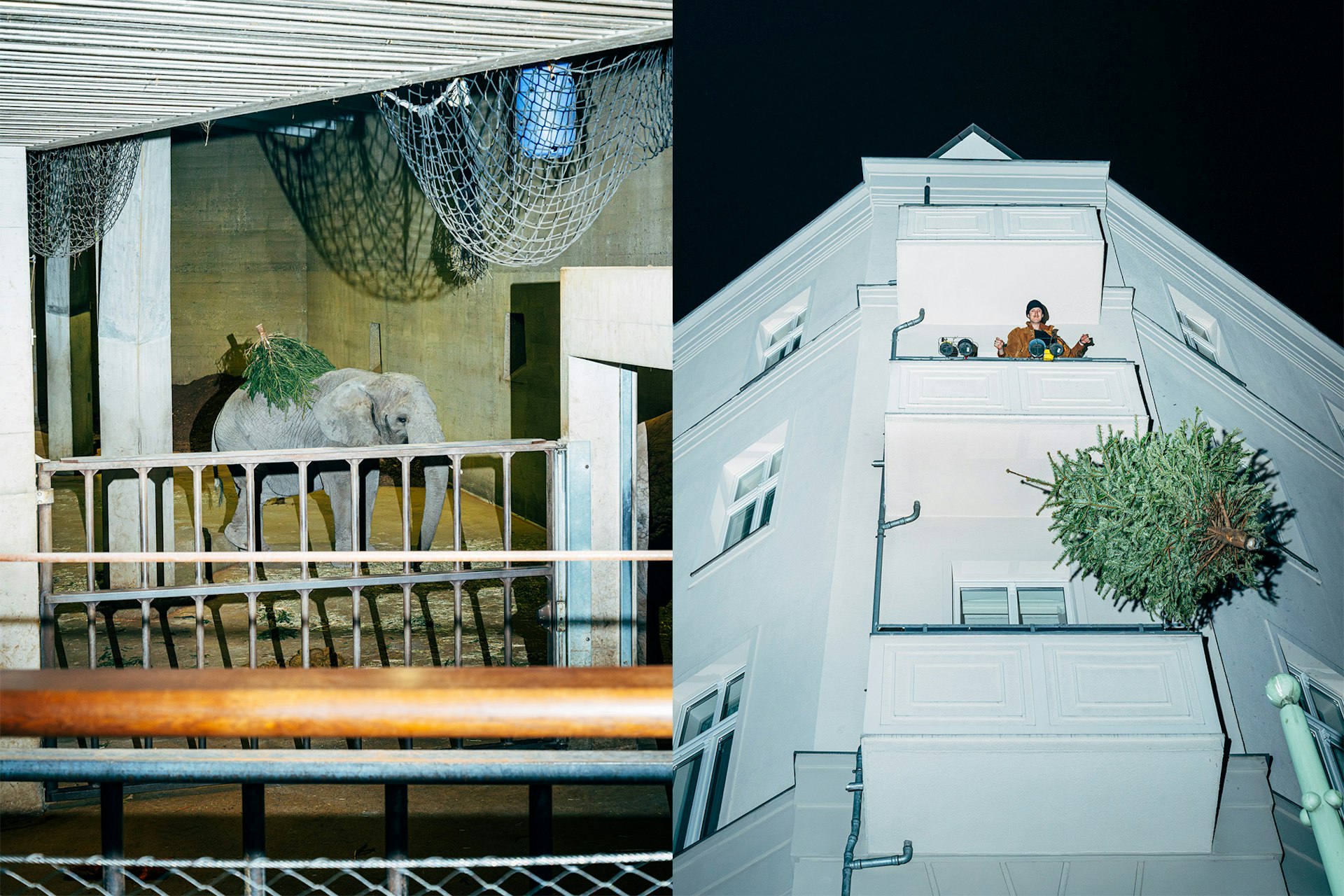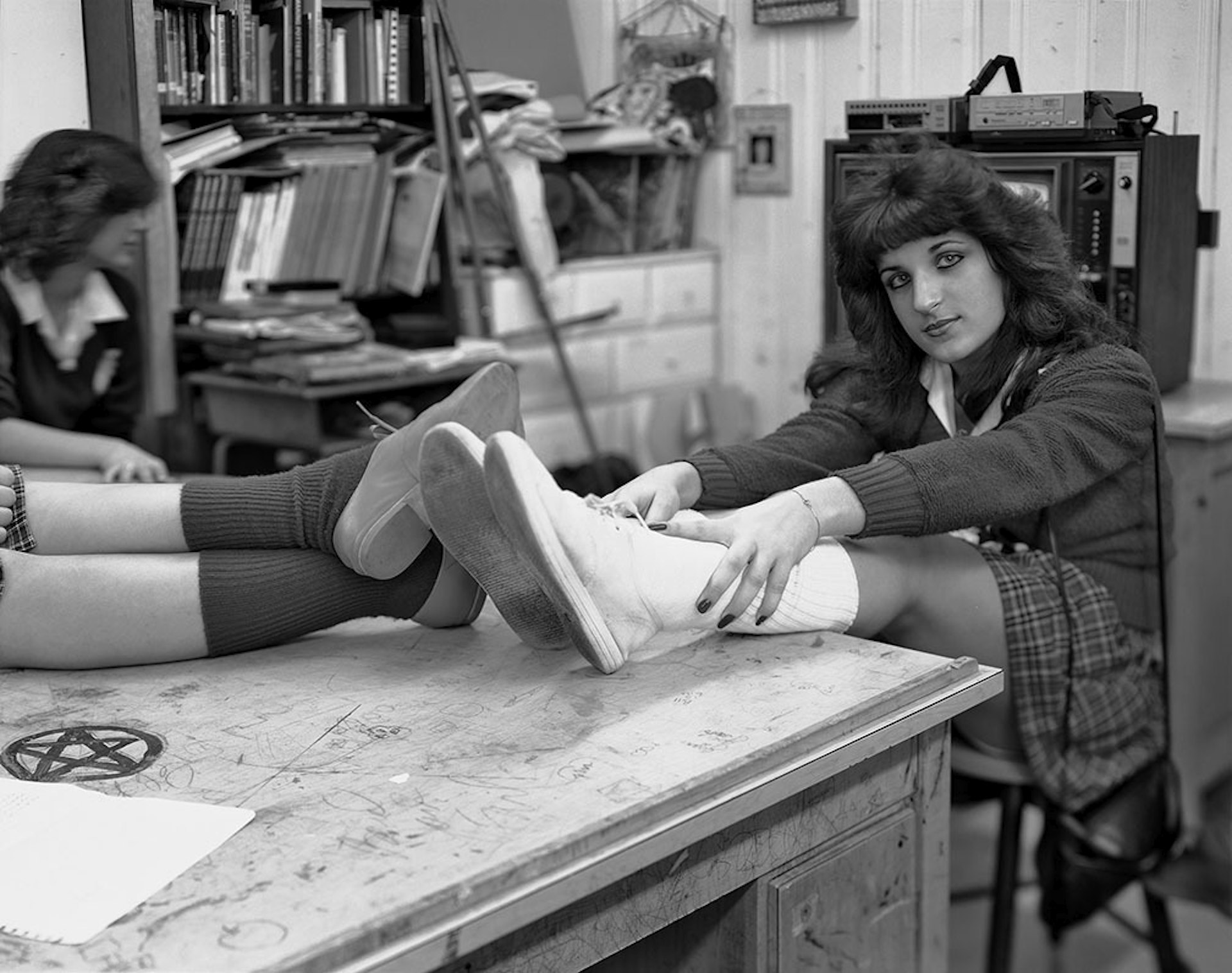A glimpse inside London’s high-rise estates in the 1980s
- Text by Miss Rosen
- Photography by Janine Wiedel

After being awarded the West Midland Art Bursary in the late 1970s, photographer Janine Wiedel spent two years documenting the rapid decline of coal and steel industries across the region. While working on the project, which was first exhibited at The Photographers’ Gallery in 1979, Wiedel became aware of a new phenomenon. She’d noticed that wower block buildings were springing up amid the rubble and remnants of factories and workshops around Birmingham.
Having studied architecture in San Francisco during the late 1960s, Wiedel had always been interested in the effect of the environment on people’s lives. “In the 1960s, high-rise living was thought to be an innovative solution to the housing crisis,” Wiedel explains. “The architecture was mainly influenced by Le Corbusier’s theories of ‘cities in the sky,’ which aimed to improve interaction and create a sense of community.”
But it proved to be anything but. “The use of concrete slabs produced a modern Brutalist architecture and made construction more flexible as concrete could be poured on site,” Wiedel says. “The concrete didn’t weather well over the years and the reality of living up in the air did the opposite from the intended.”

In the early 1980s, Wiedel was living in Lambeth near two 21-story tower block buildings and decided the time had come for her to see the impact of this architectural movement for herself.
“Four years into Thatcher’s government, inner-city boroughs such as Lambeth bore the brunt of soaring unemployment, ideologically motivated attacks on council housing and dramatic cuts to council budgets,” she says. “The 1980s were not an easy moment for most of the residents. Rather than the optimism with which such buildings had been erected in the1960s, I mostly found a sense of isolation and alienation among residents.”
In the new two volume series, High-Rise 1983 (Café Royal Books), Wiedel reflects on her visits to the towers and with its residents, offering an intimate view of life inside the concrete walls. Inspired by photographers like Walker Evans, Dorothea Lange, and W. Eugene Smith, Wiedel created a documentary project that would allow her to get to know the people she was photographing.


Access to the towers proved simple enough. “The main entrances into the building were permanently unlocked making it possible for me just to walk in and take the elevator to different floors,” Wiedel says. “My selection was totally random. I just pushed the elevator button to different floors, knocked on a door and explained my interest in finding out about life in a high-rise.”
Most people were incredibly welcoming, inviting her inside their homes and their lives with candour, vulnerability, and warmth. Wiedel listened to their stories, often getting to know them before making photographs. Working without an agenda, schedule, or deadline, Wiedel collaborated freely with the residents, creating timeless portraits of the era.
“I always do my best to go into any unknown situation with an open mind,” she says. “I tend to take the photographs very informally and I very rarely pose people. I am always watching for that moment when things fall into place naturally.”






High-Rise 1983 is out now on Café Royal Books.
Latest on Huck

ATMs & lion dens: What happens to Christmas trees after the holiday season?
O Tannenbaum — Nikita Teryoshin’s new photobook explores the surreal places that the festive centrepieces find themselves in around Berlin, while winking to the absurdity of capitalism.
Written by: Isaac Muk

Resale tickets in UK to face price cap in touting crackdown
The move, announced today by the British government, will apply across sport, music and the wider live events industry.
Written by: Isaac Muk

Nearly a century ago, denim launched a US fashion revolution
The fabric that built America — From its roots as rugged workwear, the material became a society-wide phenomenon in the 20th century, even democratising womenswear. A new photobook revisits its impact.
Written by: Miss Rosen

A forlorn portrait of a Maine fishing village forced to modernise
Sealskin — Jeff Dworsky’s debut monograph ties his own life on Deer Isle and elegiac family story with ancient Celtic folklore.
Written by: Miss Rosen

Subversive shots of Catholic schoolgirls in ‘80s New York
Catholic Girl — When revisiting her alma mater, Andrea Modica noticed schoolgirls finding forms of self-expression beyond the dress code. Her new photobook documents their intricate styles.
Written by: Isaac Muk

We need to talk about super gonorrhoea
Test & vaccinate — With infection rates of ‘the clap’ seemingly on the up, as well as a concerning handful of antibiotic resistant cases, Nick Levine examines what can be done to stem the STI’s rise.
Written by: Nick Levine